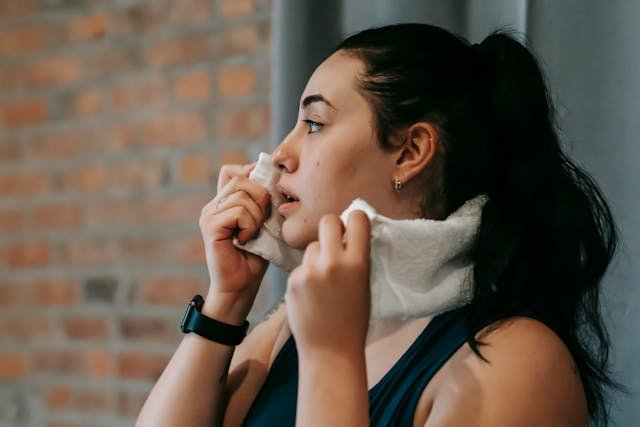
As you hit your stride at the gym, you may notice yourself sweating more than usual. For some individuals, it doesn’t take long before they’re noticeably damp while others remain relatively dry. Understanding the reasons behind excessive sweating during workouts can help you better manage your body’s response.
Why Sweating Occurs During Exercise
When you work out, your body sweats as a natural cooling mechanism. Physical activity or exposure to heat triggers your sweat glands, which release moisture that evaporates from your skin. This process cools you down and contributes to about 22% of your body’s heat loss as part of the thermoregulation process.
Why Some Individuals Sweat More
If you often feel like the sweatiest person around, there could be several explanations. You might be engaging in more vigorous workouts, leading to a higher body temperature compared to others.
Another possibility is a condition known as hyperhidrosis, which causes excessive sweating even in non-heat conditions or when you’re not exercising. It’s estimated that about 5% of the U.S. population is affected by hyperhidrosis, which may be linked to other undiagnosed conditions, including endocrine disorders. If you experience significant sweating without any clear triggers, it’s worth discussing with your healthcare provider.
Additionally, your heart rate may rise during exercise or due to certain medications, triggering increased sweating. If you suspect your perspiration may be linked to more than just workout intensity, consult your doctor to explore potential causes.
4 Tips to Manage Excessive Sweating
While it’s essential to allow your body to sweat as a natural cooling process, there are ways to manage excessive perspiration during exercise and beyond.
1. Opt for a Combined Antiperspirant and Deodorant
Not all deodorants function the same way. Look for products that offer both antiperspirant and deodorant properties. Antiperspirants block sweat glands to reduce moisture, while deodorant works to neutralize odor. If underarm sweating is your main concern during workouts, this combination can help you feel fresher and more comfortable.
2. Review Your Medications
Examine the side effects of any prescription medications you are taking, as some may contribute to increased sweating. It’s worth discussing alternative options with your primary care physician that might have a lesser impact on perspiration.
3. Wear Moisture-Wicking Fabrics
Check your clothing tags—if they primarily consist of heavy cotton, consider switching to moisture-wicking fabrics. These specialized materials are designed to pull sweat away from your skin to the exterior of your clothing, helping you feel less sticky and more comfortable. However, remember that moisture-wicking does not reduce the need for hydration; continue to drink plenty of water to support brain and muscle function.
4. Consult Your Healthcare Provider
For those struggling with excessive sweating, it’s advisable to consult your doctor for potential treatments. Some options might be as straightforward as Botox injections for underarm perspiration management, depending on where your sweat glands are most active.
An alternative treatment is iontophoresis, where individuals place their hands or feet in shallow water while a device passes a mild electrical current through their skin. If you do not have metal implants or a pacemaker, this approach might be suitable for you.
Gain a Better Understanding of Your Body
Experiencing substantial sweating during workouts is common, and there are numerous reasons for variations in perspiration levels among individuals. Various treatments may also be available. Reach out to your doctor to explore your options and find the best ways to feel comfortable in your own skin.







